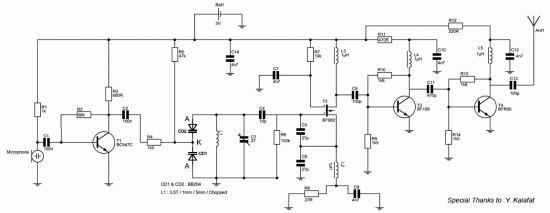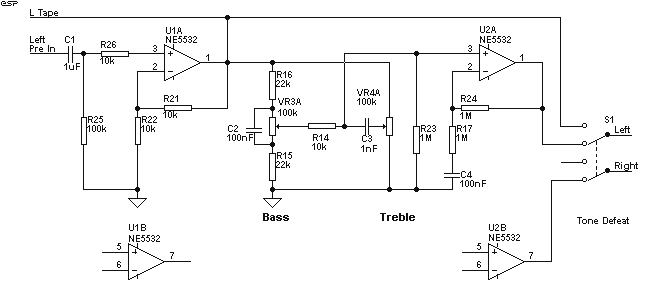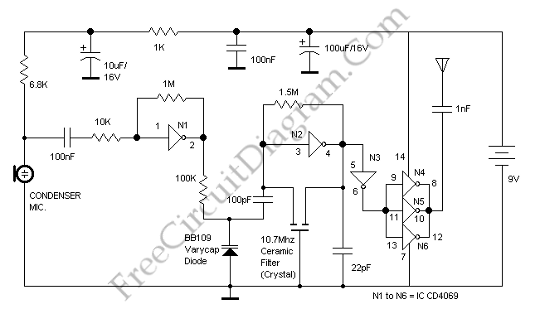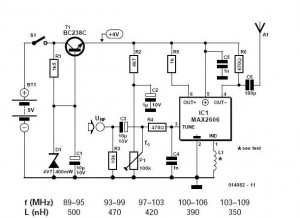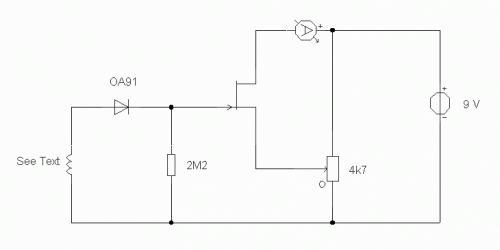
Good Quality 500M FM Transmitter
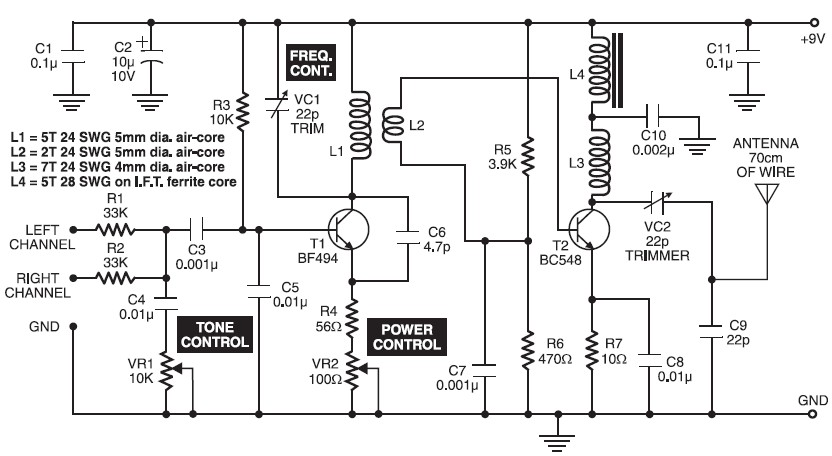
A high-quality FM transmitter circuit designed for use with amplifiers, providing a strong signal strength with a range of up to 500 meters and a power output of approximately 200 mW.
This FM transmitter circuit is engineered to deliver reliable performance for audio broadcasting applications. The circuit typically consists of several key components: an oscillator, a modulator, an amplifier, and an antenna.
The oscillator generates a carrier frequency in the FM band, typically between 88 MHz and 108 MHz. This frequency is determined by the values of the capacitors and inductors used in the oscillator circuit. The modulator is responsible for varying the frequency of the carrier wave in accordance with the input audio signal, which is usually fed from an audio source such as a microphone or an audio player.
The amplifier boosts the modulated signal to increase its power output to around 200 mW, which is sufficient for achieving a transmission range of up to 500 meters under optimal conditions. The antenna, usually a simple dipole or monopole design, radiates the signal into the surrounding environment, allowing it to be received by FM radios within the specified range.
Power supply considerations are also essential for this circuit. A stable voltage source is required to ensure consistent operation, and the circuit may include voltage regulators to maintain the required operating voltage for the various components.
In summary, this FM transmitter circuit is suitable for applications requiring moderate-range audio transmission, providing a balance of performance and simplicity in design, making it an excellent choice for hobbyists and developers alike.Good Quality FM transmitter circuit for your amplifier, gives you a pretty good signal strength up to range of 500 metres having a power output of about 200 mW 🔗 External reference
This FM transmitter circuit is engineered to deliver reliable performance for audio broadcasting applications. The circuit typically consists of several key components: an oscillator, a modulator, an amplifier, and an antenna.
The oscillator generates a carrier frequency in the FM band, typically between 88 MHz and 108 MHz. This frequency is determined by the values of the capacitors and inductors used in the oscillator circuit. The modulator is responsible for varying the frequency of the carrier wave in accordance with the input audio signal, which is usually fed from an audio source such as a microphone or an audio player.
The amplifier boosts the modulated signal to increase its power output to around 200 mW, which is sufficient for achieving a transmission range of up to 500 meters under optimal conditions. The antenna, usually a simple dipole or monopole design, radiates the signal into the surrounding environment, allowing it to be received by FM radios within the specified range.
Power supply considerations are also essential for this circuit. A stable voltage source is required to ensure consistent operation, and the circuit may include voltage regulators to maintain the required operating voltage for the various components.
In summary, this FM transmitter circuit is suitable for applications requiring moderate-range audio transmission, providing a balance of performance and simplicity in design, making it an excellent choice for hobbyists and developers alike.Good Quality FM transmitter circuit for your amplifier, gives you a pretty good signal strength up to range of 500 metres having a power output of about 200 mW 🔗 External reference

